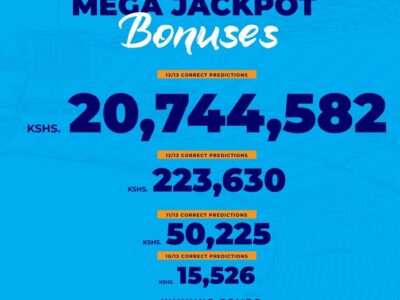Understanding sportsbook betting lines is fundamental if you want to make informed wagers instead of shooting in the dark. Whether you’re contemplating taking in some NFL or NBA action, a premier league football game or a weekend UFC fight, knowing how to read the spread, moneyline, and totals odds can help you evolve from a casual bettor to a strategic and calculated one.
This guide walks you through these three core bet types – spread, moneyline, and totals with zero filler and no fluff—just practical insights and real-world clarity.
Point Spread: Balancing the Matchup
Among all the wager types, point spread betting is one of the most familiar and widely used across sports like football and basketball, especially in matchups where one team is significantly stronger than the other. To balance the odds, sportsbooks introduce a spread, which is why understanding how sportsbook betting lines are structured is crucial. These lines assign a handicap to the favorite, creating a more competitive betting environment and ensuring that neither side is overly favored.
The point spread works by giving the underdog a cushion while requiring the favorite to win by a certain margin. For example, if the Cowboys are listed at -6.5 and the Jets at +6.5, a bet on the Cowboys only pays out if they win by seven or more points. Conversely, a bet on the Jets wins if they lose by six or fewer points—or if they win outright. This mechanism not only levels the playing field but also adds an extra layer of strategy for bettors to consider.
You’ll often see half-point increments to eliminate ties. This avoids a “push,” where the final score lands exactly on the number, and your stake gets refunded. A line of -7.5, for example, requires the favorite to win by eight or more—there’s no wiggle room.
Point spreads shift in response to betting volume, injury news, or weather updates. You might catch a line early at -3.5 and see it close at -5. That movement reflects how sportsbooks react to sharp money and public sentiment—yet another reason why learning how to interpret sportsbook betting lines can give you a strategic edge.
Different sports use spreads differently. In the NFL and NBA, they’re a staple. But in lower-scoring sports like soccer or baseball, the spread gives way to other formats like the moneyline or run line. That shift makes mastering spread logic even more important if you’re betting across multiple sports.
Moneyline: Pick the Winner, No Math Required
Moneyline betting is the most straightforward format: just choose the team or fighter you think will win. That’s it. The odds, though, require some explanation if you’re not familiar with American betting formats.
Favorites carry a minus sign, and underdogs show a plus. A -150 moneyline means you need to wager $150 to win $100. A +130 underdog pays $130 on a $100 bet. You can bet any amount, of course, but the ratio always stays consistent.
Moneyline odds reflect implied probability. A -300 favorite implies a high chance of winning; a +250 underdog implies a long shot. Sportsbooks set these based on matchup analysis, injuries, public perception, and sharp action.
This market is popular in sports where spreads don’t apply well—like baseball, MMA, or tennis. You’re not worried about how many runs or points a team wins by. You only care about the end result.
Keep an eye out for line movement. When news breaks—a starting pitcher gets scratched or a star forward gets benched—the moneyline reacts instantly. Early bets often offer better value, but late bets may reflect more accurate information.
Parlays often combine multiple moneylines. You’ll see bettors stacking heavy favorites for a better payout. Be cautious, though: one loss voids the entire ticket. There’s no refund for going 3-for-4 in a four-leg parlay.
Totals (Over/Under): Bet on the Score, Not the Winner
Totals betting, also known as the over/under, lets you focus on the combined score of both teams. Sportsbooks set a projected number, and you decide whether the actual total will be higher or lower.
Let’s say the Lakers and Warriors have a total set at 224.5. If the final score is 115–112, the total is 227—over wins. If it’s 108–105, the total is 213—under wins. Simple? On the surface, yes. But totals require more than a quick glance at team averages or scoring records.
Oddsmakers rely on a combination of data points to set these numbers—pace of play, shooting efficiency, player injuries, even referee tendencies. But, as betting sharpens and more data becomes available, bettors are beginning to dig deeper. Digging deeper means accessing the latest sport research on team fatigue, travel schedules, and rest differentials (among other factors) – that information is key when it comes to helping even experienced bettors refine their over/under strategies.
For example, back-to-back games or early start times can drastically affect scoring numbers. A team flying cross-country after a road trip may not bring the same offensive energy. That’s where insights from the latest sport research give bettors a small but measurable advantage over those still leaning on surface-level stats.
Totals also move based on betting action and breaking news. A surprise scratch of a starting quarterback could knock the total down by multiple points. Betting early may yield better numbers, but betting later offers more certainty.
Live betting adds another layer. Totals change during the game, letting you bet new overs or unders in real time. If you notice a sluggish start or unexpected scoring run, you can exploit the new line accordingly.
How the Three Work Together
Each of these betting options tells a different story about the matchup. The spread implies how competitive the game should be. The moneyline reveals who’s expected to win outright. The total estimates how explosive—or dull—the scoring might be.
You don’t have to stick to one type of wager. In fact, comparing them can uncover hidden value. Let’s say a team is a +3 underdog but only a +120 moneyline. That suggests oddsmakers think they have a strong chance of winning, not just covering. That’s when you might skip the spread and take the better payout.
Alternatively, you might agree with a total projection but not the outcome. A game between two average teams might look like a coin flip, but you could still confidently bet the over if both have leaky defenses.
Shopping lines across multiple sportsbooks can give you an edge too. You might find the same team listed at +3.5 in one book and +3 in another. That half-point matters. Even small differences in juice (-110 vs -115) add up over a season. Line shopping doesn’t require more skill—just effort and discipline.
Use the Lines to Shape Smarter Bets
Knowing how to read spreads, moneylines, and totals unlocks a deeper understanding of how sportsbooks see each game. Instead of guessing or following gut feelings, you’ll recognize what the odds are telling you—and when to challenge them.
As you gain experience, you’ll start spotting soft lines, key number shifts, and betting trends worth following. You’ll also understand how the betting market reacts to information in real time. That makes you a more strategic bettor—not just someone hoping to get lucky.
So the next time you pull up a sportsbook screen and see the spread, moneyline, and total flashing back at you, take a second to read between the lines. There’s a lot more behind those numbers than meets the eye.













